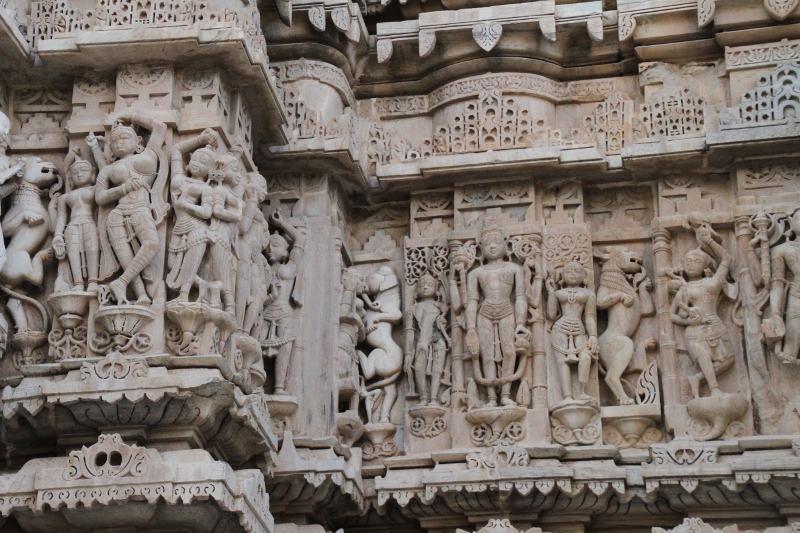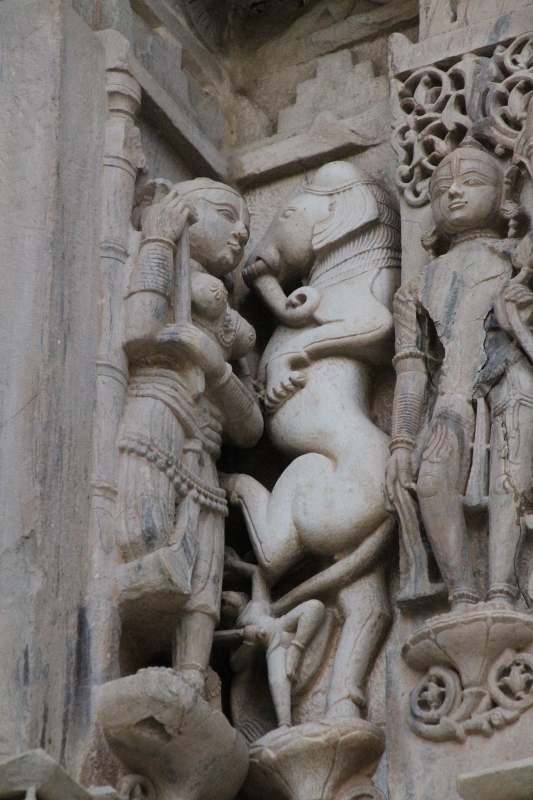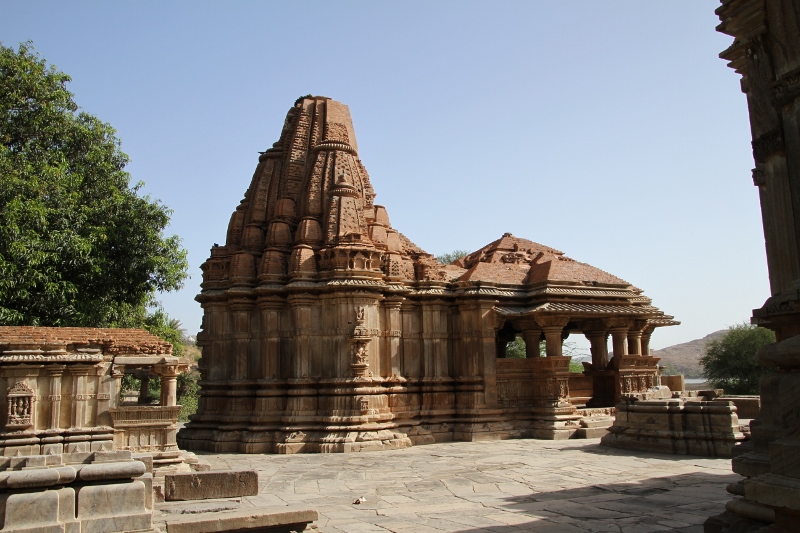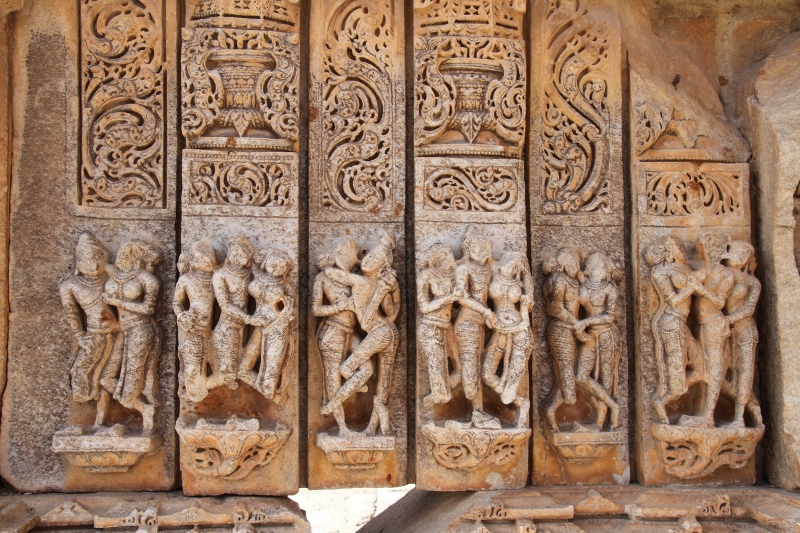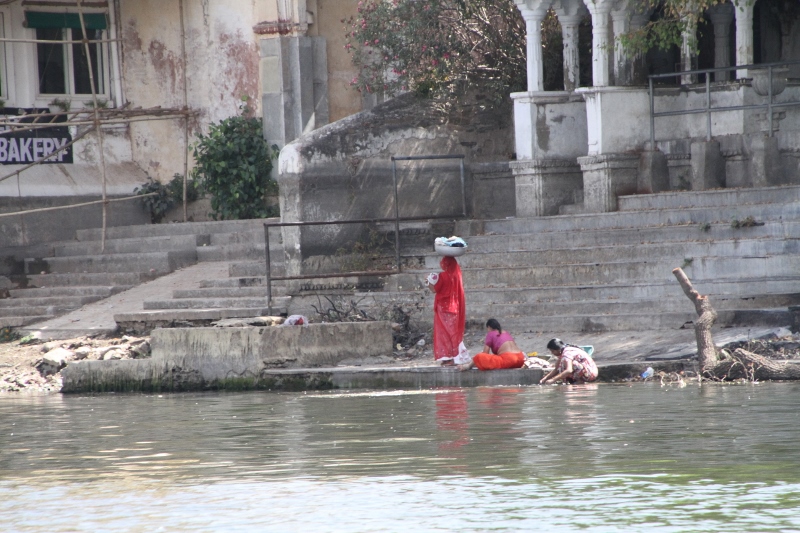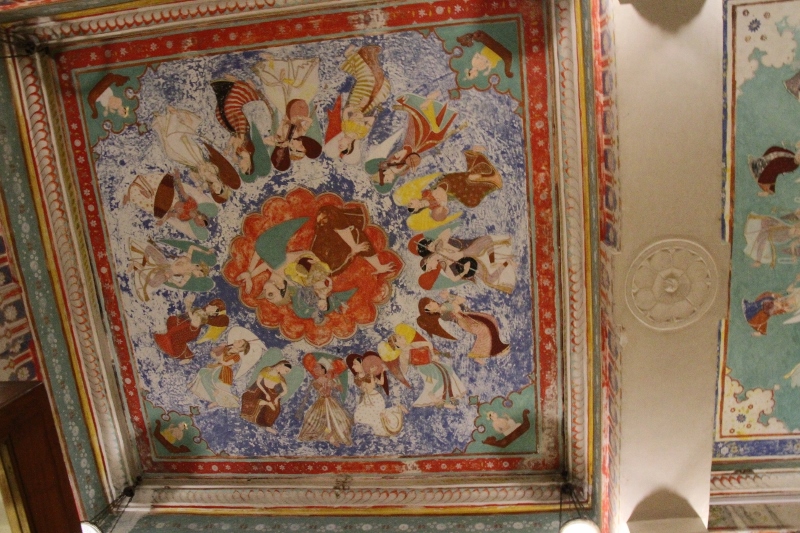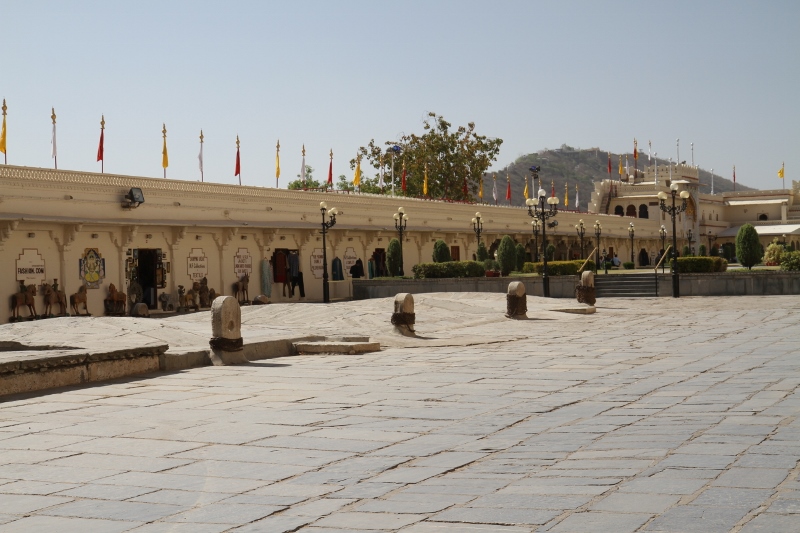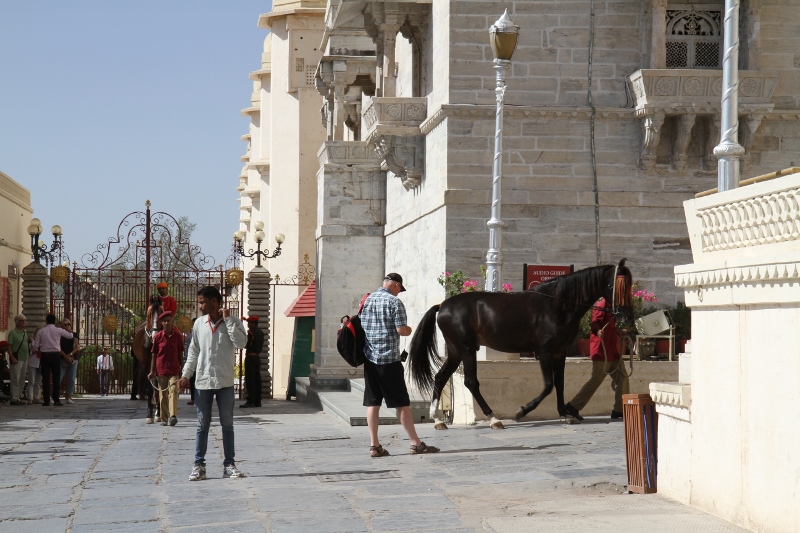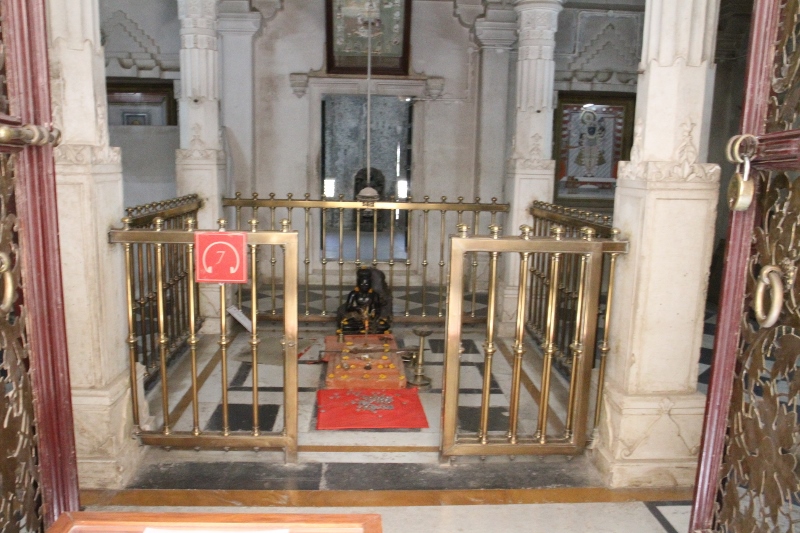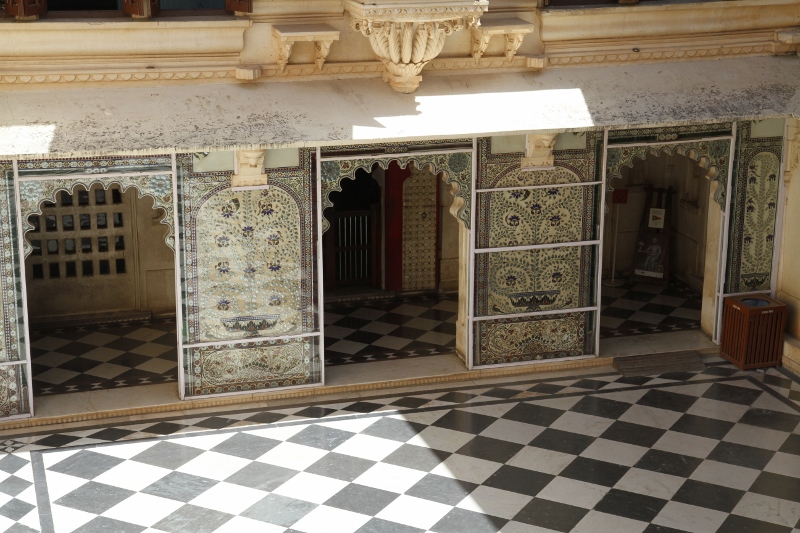Udaipur is the jewel of Mewar – a kingdom ruled by the Sisodia dynasty for 1200 years. The foundation of the city has an interesting legend associated with it. According to legend, Maharana Udai Singh, the founder, was hunting one day when he met a holy man meditating on a hill overlooking the Lake Pichola. The hermit blessed the Maharana and advised him to build a palace at this favorably located spot with a fertile valley watered by the stream, a lake, and agreeable altitude and an amphitheater of low mountains. Maharan followed the advice of the hermit and founded the city in 1559.
April 28 Introduction to Udaipur and visit to a Hindu temple
We flew from Jaipur to Udaipur. It was about a 40-minute drive from the airport to our hotel. Elections day in Udaipur is the 29th so there is extra security. We were stopped on the way to the city to be sure we were not carrying a large amount of cash that could be used to sway voters. They take elections seriously here in India, with about 70% turnout. Because of the size of the electorate, over 900,000, it takes about a month to complete voting.
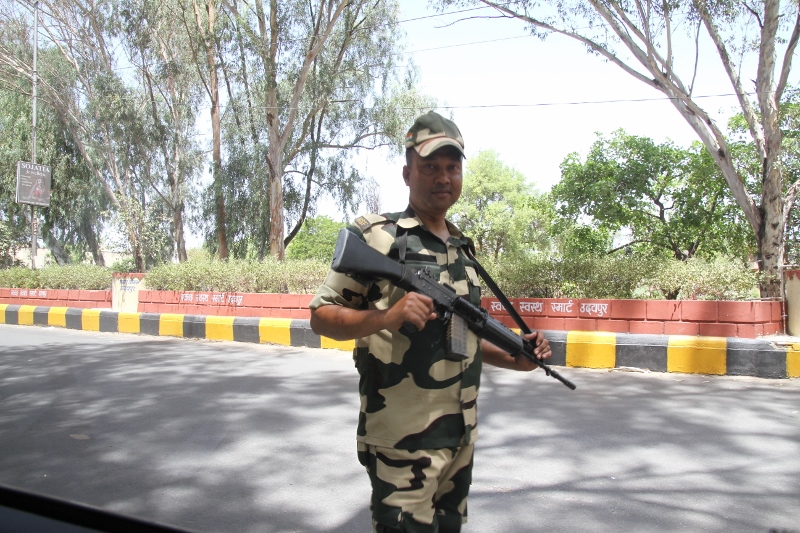
We arrived at our hotel, a beautiful property on the shores of the lake Pichola with views of the city palace across the lake. Given the heat of the midday, we decided to rest and then met our guide around 5:00. We drove to an area just outside the old city where it is difficult for cars to negotiate. From there we walked through the narrow streets among tuk-tuks, motorbikes, other pedestrians, and cows. We walked to a point across from the palace, a huge complex that has been built up by 22 generations of rulers. The king still lives in part of the palace.

The hotel courtyard 
Hotel grounds 
The pool shared by several rooms 
People do their own laundry, but take it to here to be ironed 
Streets in Udaipur 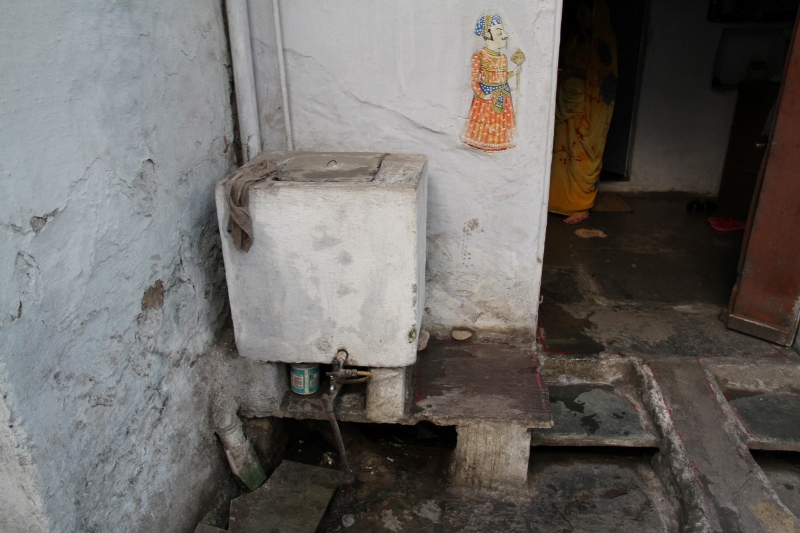
People live scraps of food , leftovers, for the cows. 


The City Palace
We had a drink at a rooftop bar, and then walked to the Jagdish Temple, a Hindu temple that has been in continuous use since 1651. Because it is an active temple, pictures are not allowed inside.
April 29 Ancient temples and a boat ride.
Early morning, we drove to Nagda, what was once an important city of Mewar. Here there are the remains of the Sas Bahu temples. Locals consider these the “Mother-in-law” / “Daughter-in-law” temples, believing that the Mother-in-law commissioned one, and then the Daughter-in-law had to build a bigger one to outdo her mother-in-law. But that is only supposition. The temples are from the early 10th century. It is amazing that the carvings, with no restorations, are still so vivid. Parental guidance is advised as some of the carvings are not for young viewers.
Notice the bottom is marble and the tops are made of brick. In their day, they would have been covered with lime and all white.
After returning to the city we took a boat ride around the lake. There is an island in the lake that houses a garden and a small palace that served as home to Shah Jahan who sought refuge in Udaipur after rebelling against his father in a fight for the throne of the Mughal empire..
Later in the evening we drove to the “monsoon palace” for the sunset. The palace, built in 1884 to watch the monsoon clouds and as a hunting lodge, is a small outpost in a nature preserve at the top of a hill outside of Udaipur.
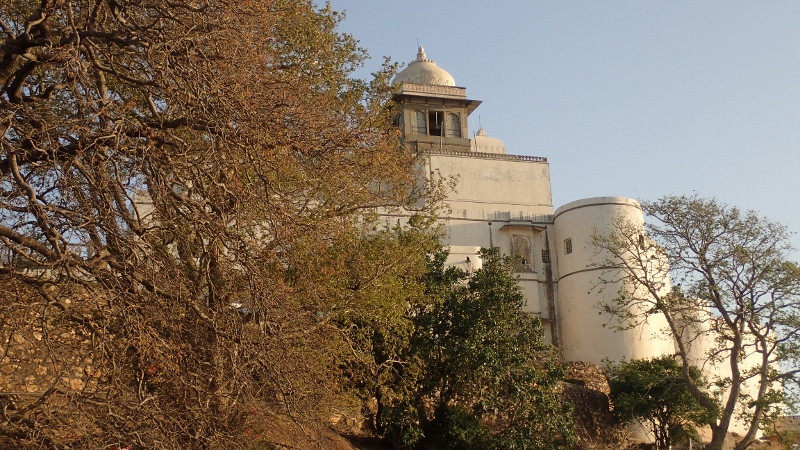
The palace 
View of the city 
Sunset
April 30 The City Palace
Today we visited the City Palace, the largest palace complex in Rajasthan. Built over centuries by successive generations, the palace is a wren of stair cases and halls joining various levels of the palace that was built on a hill top overlooking the lake.
After our palace tour we did some shopping in some of the local stalls. Then returned to the hotel for our final dip in the beautiful pool.







